September 2025
🎯 The Marketing Transformation
Something fundamental is shifting in marketing right now. AI search is gaining mainstream adoption, coexisting with traditional search — at least for now. And AI Search works differently. ChatGPT referral traffic dropped fifty-two percent in recent months as AI assistants are favoring platforms like Reddit and Wikipedia. Brand pages say "Schedule a demo." Reddit compares ten options. Reddit wins. What does this mean for you? Your content needs to answer questions, not just sell products.
Meanwhile, HubSpot challenged the traditional sales funnel. Their new Loop framework reflects what we all know—customer journeys aren't linear anymore. They're continuous cycles of discovery, engagement, and evolution.
But here's what's really interesting. While AI can now generate a Super Bowl-quality ad for under two thousand dollars, reports show that ninety-five percent of organizations report zero return on their official AI projects. Why? Because AI adoption is not only about integration but also about rethinking your entire workflow.
The winners are mapping their processes end to end, understanding that when one workflow speeds up, everything connected to it needs to adapt. They're putting humans in the cockpit—not to do the work, but to orchestrate it.
This isn't about replacing marketers. It's about augmenting the marketers and rethinking operations. The question isn't whether to adopt AI. It's whether you're building workflows or just collecting tools.
🎥 Watch the video summary of this newsletter
-
Marketing is undergoing significant changes in assets creation, campaign orchestration, and operations management, largely driven by generative AI and automation. Senior marketing leaders are focusing on scaling automation & AI responsibly and aligning it with business goals. This AI integration goes beyond basic tools, embedding deeply within marketing ecosystems, making it foundational, much like the impact of cloud computing on IT.
AI promotes full-process augmentation, necessitating a re-evaluation of marketing practices. Active sponsorship is crucial for effective AI implementation, and without a clear operational blueprint, existing inefficiencies may worsen. Organizations must redefine team roles and prioritize processes for automation to enhance strategic human work.
My take: This transformation is not only about AI integration, but about process automation that makes AI adoption efficient. Rethinking operations, setting a clear strategy, prioritizing automation-ready workflows, and managing risks all highlight the pivotal role of structured governance in successful AI integration.
| #Marketing | MarTech | 2025/09/01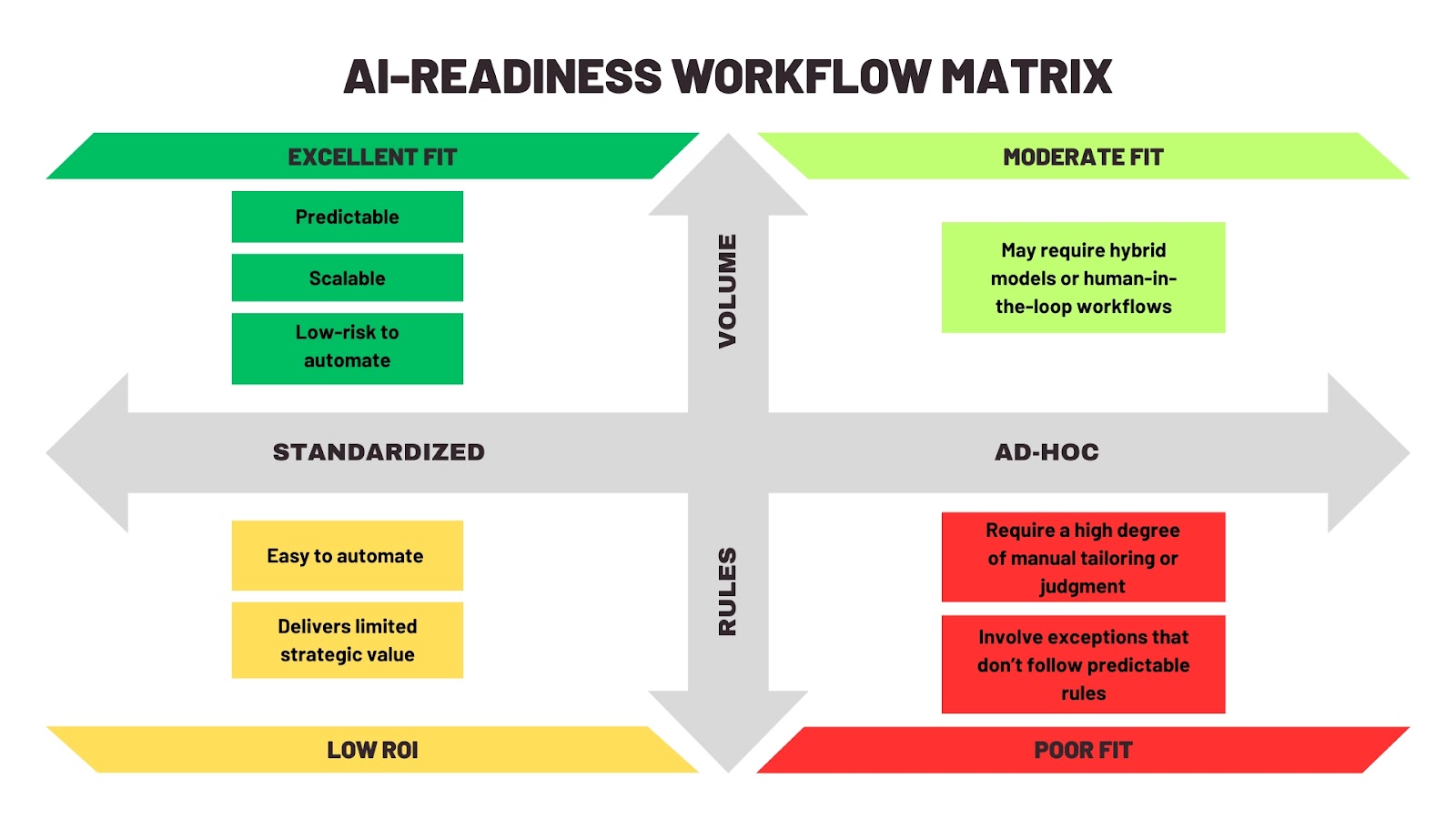
-
In his latest interview, Sam Altman noted that AI will significantly reshape customer support roles. While automation may take over routine tasks, this shift provides an opportunity to augment these jobs with a stronger emphasis on human connection. Support professionals will be empowered to focus on empathy, creativity, and complex problem-solving, ultimately elevating the value they bring to customers and organizations alike.
| #Marketing | Sam Altman | 2025/09/09 -
AI enhances marketing by automating data management, enabling hyper-personalization, improving predictive behavior, and handling repetitive tasks.
My take: It's the orchestration of all these elements that truly changes the game. Building AI systems around a robust workflow and clear intent is crucial to maximize outcomes.
| #Marketing | MarTech | 2025/09/09 -
OpenAI's research examines hallucinations in large language models, including GPT-5 and ChatGPT. Hallucinations are false yet plausible statements created by these models and represent a fundamental challenge. They arise from the pretraining focus on word prediction, which leads to errors when models encounter rare facts. Current evaluation methods reward guessing rather than accuracy. Thus, it is essential to revise these methods to discourage confident errors and emphasize uncertainty.
My take: Since hallucinations are inherent to model mechanics, it's unlikely these issues will be resolved quickly. That's why integrating human oversight into AI workflows is essential—especially where precision is critical. However, I believe that human oversight will remain a natural part, even if we manage to eliminate hallucinations, because automation can fail not only due to hallucinations but also simply because the context keeps changing.
| #Marketing | TechCrunch | 2025/09/07 -
HubSpot has introduced "the Loop", a new marketing framework designed to adapt to the AI-driven shift in consumer behavior and declining website traffic. Unlike the old linear funnel, the Loop is a continuous cycle: brands Express their identity (e.g., playful tone), Plan and Tailor campaigns with AI (dynamic landing pages, mapped launches across LinkedIn, email, Reddit, TikTok), Amplify content across channels and AI search, and then Evolve by testing, refining, and scaling what works. The framework keeps the spirit of inbound marketing while embedding AI and data-driven personalization to help marketers run faster campaigns and connect more effectively with customers. My take: HubSpot's response to the AI paradigm shift is to equip marketers with tools to produce more efficiently, gather feedback continuously, and adapt in real time. The open question: will the Loop truly deliver on its promise—or remain just another marketing buzzword?
| #Marketing | Hubspot | 2025/09/03 -
According to the Columbia Journalism Review, over 60% of outputs from leading AI tools may be inaccurate. This makes source reliability and consistent branding critical for authority. AI search requires brands to maintain a clear, coherent narrative across digital assets. To stay ahead, brands should optimize for likely AI queries, use simple, structured language, and continuously track performance metrics. My take: As we learn how AI assistants present us in response to user queries, it's crucial to check the results and refine our story to ensure accurate representation. Let's run a quick test: type into ChatGPT the question "In 30 words, describe [your business name] business." Are you satisfied with the answer?
| #Marketing | MarTech | 2025/09/02 -
Marketing operations (MOps) professionals are essential yet often overwhelmed, leading them to lose strategic focus. Continuous demands divert their attention from strategic planning to operational tasks. To foster innovation, MOps should allocate 1-2 hours weekly for strategic thinking and implement a backlog system to prioritize ideas. Additionally, designating 5%-10% of work time for small experiments can encourage creativity. Recognizing energy levels and automating repetitive tasks will enhance efficiency and help maintain work-life balance.
| #Marketing | MarTech | 2025/09/02 -
MIT report shows that over 50% of GenAI investments go into sales, marketing, and customer relationships. Examples include AI-generated emails, smart lead scoring, personalized campaign content, follow-up automation, competitor analysis, social sentiment tracking, call summarization, chatbots, and ticket routing—highlighting a focus on customer-facing tools rather than back-office efficiency.
My take: All workflows—whether in marketing or internal operations—are interconnected. A major improvement in one area can significantly impact others. For instance, a boost in outbound campaigns can influence the inbound loop, which then affects sales capacity and even hiring needs. To truly optimize functions, organizations must map workflows end-to-end across departments to measure and track the overall impact of AI integration.
| #Marketing | MIT | 2025/09/01 -
Profound reports that ChatGPT referral traffic has decreased by 52% since July 21. This decline is primarily due to a 62% increase in citations from platforms like Reddit and Wikipedia. Brands now need to shift to answer-driven content (direct answers and comparisons instead of just selling) to enhance their referral traffic. OpenAI is currently evaluating citation weight, which is affecting search visibility for sites that provide clear answers. Importantly, this traffic drop is not linked to GPT-5 but is attributed to changes in the retrieval system. My take: It's interesting to see that with AI assistants we're beginning to distinguish between brand content that is answer-oriented and content that is sales-oriented.
| #Marketing | Profound | 2025/09/01 -
Taco Bell rolled out AI to handle drive-through orders, aiming for speed and fewer errors. The system processed over two million orders across 500+ US outlets since 2023, but viral glitches — like 18,000 waters or endless drink prompts — sparked backlash. Executives admit lessons learned, noting humans are better placed to take orders when restaurants get busy. My take: This is another reminder that AI needs us more than we need AI. Human supervision is key, and an alerting cockpit to flag unusual behavior will soon be the norm when working with automation and AI agents. The future lies in orchestration—humans directing automation and AI to work together effectively.
| #Marketing | BBC | 2025/09/01
-
A leading digital marketing firm advises brands to strengthen visibility by targeting key sites, filling content gaps, and scaling off-site presence. Forums, partnerships, and AI-assisted content in newsletters or social media can expand reach. Original research builds authority, while close work with PR and marketing ensures continuous improvement.
My take: With AI assistants, we may soon have "virtual representatives" writing about us wherever our audience is. Perhaps the future job of brand reps is to seed content so AI crawlers keep learning about us.
| #Marketing | Ahrefs | 2025/09/01 -
Marketers are grappling with chaos due to fragmented tools, manual processes, and generic AI outputs. This leads to financial risks, including wasted budgets and diluted branding. The rise of AI channels alters customer engagement and threatens brands unwilling to adapt. Disconnected tools in marketing departments create inefficiencies and data silos, while chaotic martech stacks drain resources. Moreover, content pollution from generative AI results in inconsistent and inauthentic messaging. To navigate these complexities, businesses must integrate customer journeys and channels into cohesive systems, employ data-driven communication, and maintain unified strategies across all platforms. My take: Orchestration of workflows—comprising human, automated, and AI-driven activities—is essential for efficiency.
| #Marketing | MarTech | 2025/09/01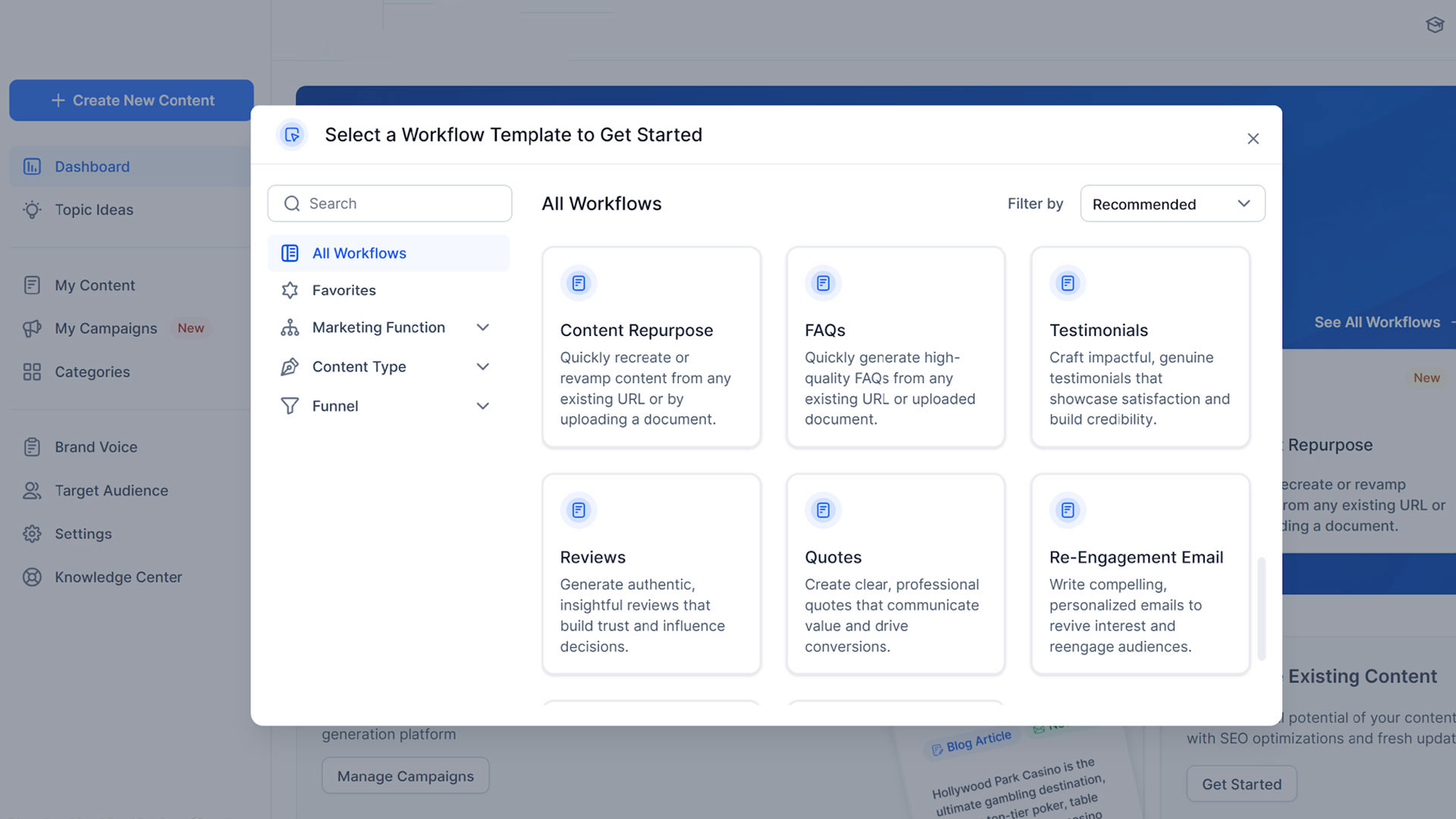
-
Marketing automation platform (MAP) spending is expected to rise from $5.7 billion in 2023 to $15.2 billion in 2033. In the B2B sector, 40-60% of marketing programs utilize MAPs for account-based marketing. However, 31% of respondents replaced their MAP in 2024 due to dissatisfaction. Cost remains a key concern, with 61% highlighting it as essential when considering replacements. As marketing becomes increasingly complex, it's crucial to map workflows and have teams with hybrid business and tech skills to navigate challenges effectively.
My take: MAPs (also called Campaign Marketing Solution & Platform), these systems are vital for orchestration marketing, sales, and digital workflows, much like Google Cloud Platform for daily data tasks. Understanding what tools to acquire or build requires clear mapping of workflows and potential bottlenecks.
| #Marketing | MarTech | 2025/09/01 -
Advancements in autonomous AI agents are enabling the independent execution of complex tasks. While existing agents resemble robotic process automation, projects like OpenAI's ChatGPT Agent and Google's Project Mariner showcase potential progress. Future agents will specialize in diverse business functions, capitalizing on market opportunities in workflow automation and contextual customization. My take is that this presents an opportunity for all companies to start mapping their workflows—especially those tied to their core differentiating strengths—and to digitalize and automate them. This will form the foundation for their future agent.
| #Leader #Marketing | a16z | 2025/09/01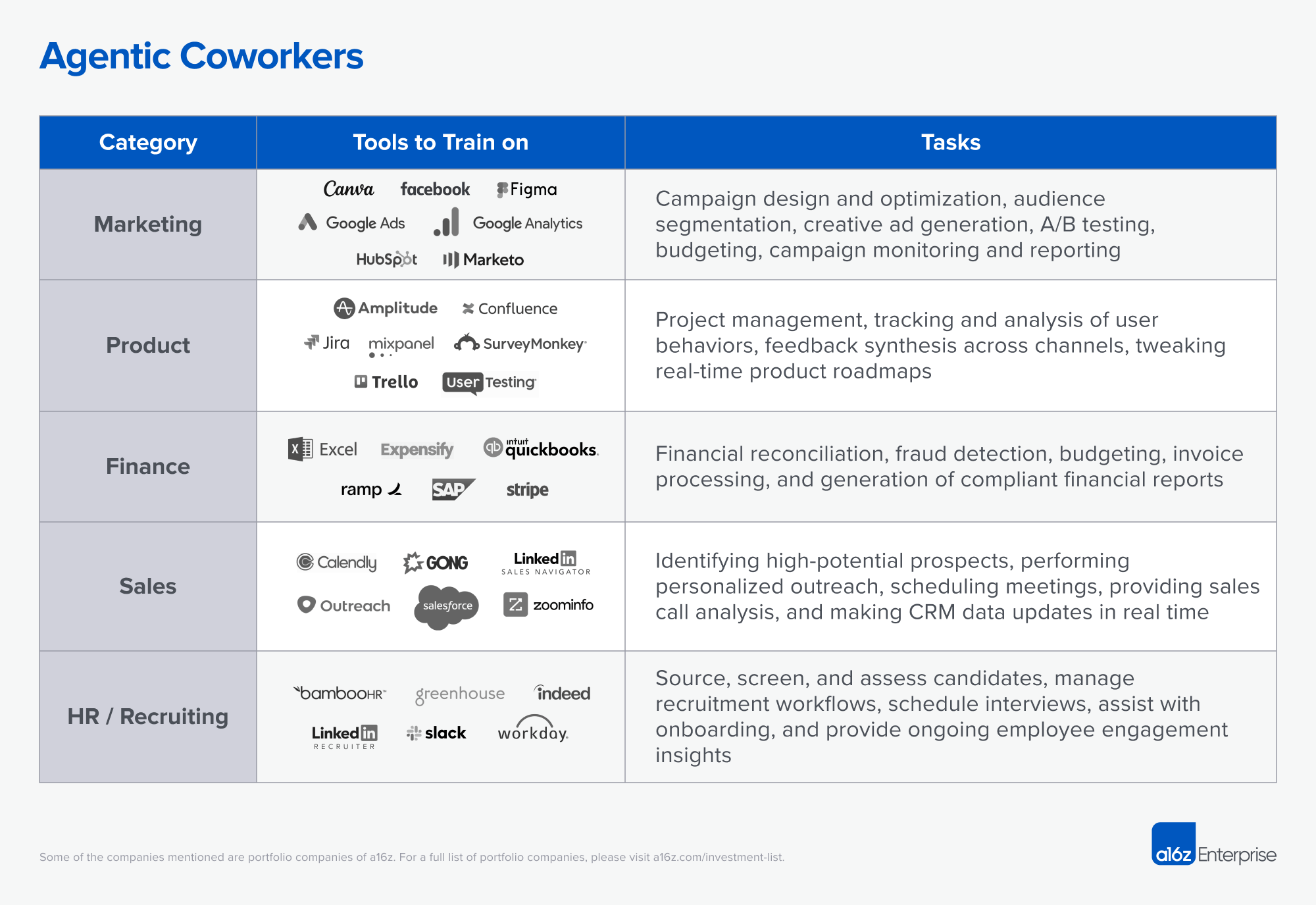
-
Customer service expectations vary across generations. Younger consumers prefer AI and self-service for speed, accuracy, and 24/7 access, while older generations value human interaction for complex needs. A poor customer experience can lead to reduced spending and brand switching. Ensuring accuracy in AI is essential, while a combination of AI and human support can help alleviate concerns and enhance loyalty through personalization and empathy.
My take: It seems that AI self-service is not only about staying competitive, but especially about winning back the younger generation.
| #Marketing | CXDIVE | 2025/09/01
-
Bank of America's Erica chatbot has processed over 3 billion client interactions, reflecting its popularity due to effectiveness and accuracy in customer service. Since its launch in 2018, Erica has undergone more than 75,000 improvements. It can now address over 700 intents, with 50%-60% of interactions offering proactive suggestions. Updates are made every two to three weeks, using data from customer interactions to enhance performance. Erica guides users to appropriate resolutions and connects them with human agents when needed, aiming to engage diverse demographics. My take: Erica is widely adopted and generally viewed positively by both customers and industry analysts. While not without flaws, it serves as an interesting example of effective AI integration in customer relationships.
| #Marketing | CXDIVE | 2025/09/01 -
Younger consumers have higher expectations for customer service, with many rating interactions lower than older generations. A survey indicates that 70% of consumers will pay more for brands known for strong support. Younger users prefer AI agents for their efficiency and perceived empathy, while older consumers still favor human support via phone. This generational divide highlights the need for brands to adapt to evolving customer preferences. My take: Is AI self-service the new way to stay relevant among younger generations?
| #Marketing | Decagon | 2025/09/01 -
Veo3, Google's latest video generator, is quickly shifting from niche vlogs to powerful marketing use cases. On X/Twitter, users are sharing groundbreaking prompt experiments and bold branding ideas—most notably Aziz for AI and Salma, whose IKEA ad went viral. Veo3 is fast emerging as a must-watch tool for marketers exploring AI-driven storytelling. My take: Since the introduction of Veo3 (video generator) and Nano Banan (new Google image generator), there's been a flood of examples showing how to create high-quality ads using nothing more than prompts and a bit of automation. Now, new models like Wan 2.2 and 2.5 (Chinese video models) are raising the bar even higher. Seeing how easily video ads can be produced with these models, I increasingly understand what Meta and Amazon mean by building end-to-end platforms for marketing campaigns (from prompt to targeting through creative assets). Definitely a trend to watch closely.
| #Marketing | TikTok | 2025/09/01 -
According to Semrush, a digital marketing analytics company, AI optimization is imperative as AI search traffic will eclipse traditional organic search by early 2028, with AI-driven visitors converting 4.4 times better. This highlights the critical need for AI visibility in growth strategies and product launches.
| #Marketing | Semrush | 2025/09/01 -
At first glance, it may sound like an extravagant idea—but early signals suggest it could be taking shape. Ramp, for instance, has just opened a role for a "Vibe Marketing Manager," hinting that a new kind of marketer may soon emerge. If the trend holds, the "vibe marketer" would blend creativity, technical skills, and automation. Instead of relying on large teams, one person could handle ad copy, lead qualification, and workflow design within a single AI-driven loop. This would reduce the need for siloed specialists while strengthening collaboration through customized tools. Teams may shift toward leaner, versatile generalists, with startups especially benefiting from vibe marketers who use AI to automate and amplify impact. In leadership, they could drive growth by merging automation, creativity, and collaboration—marking a turning point in how marketing teams are built and led. My take: We'll see if—and in which types of organizations—this role will emerge. If it gains momentum, it's likely to grow faster within smaller organizations.
| #Marketing | JONATHAN MARTINEZ | 2025/09/01
-
Model Hannah James expresses concern that digital replicas threaten job security. Partnering with Kartel.ai, she utilizes AI for fashion modeling. Critics warn digital models may displace jobs, complicate rights, and challenge industry norms, while real models seek protection against exploitation.
| #Marketing | Los Angeles Times | 2025/09/01 -
AI usage increased significantly from 8% to 38% in 2.5 years, with over 20% of Americans being heavy users of AI tools monthly. However, 95% continue to use traditional search engines. Overall, the data shows that traditional search and AI use trends coexist. My take: Like with other technologies—WhatsApp didn't totally replace SMS, FaceTime didn't replace phone calls—AI search will not totally replace traditional Google search. However, strong growth of AI search will definitely dominate some search habits, like we already see in product discovery. Moreover, AI modes from Google and other players will facilitate access to AI search, so the story will definitely evolve from here. Definitely a trend to keep an eye on if your business relies on product/service discovery in search tools.
| #Marketing | Sparktoro | 2025/09/01 -
Streaming has now overtaken linear television in viewership, according to Nielsen data. YouTube remains the top source of entertainment, significantly disrupting traditional TV. Content such as news and sports is increasingly migrating to streaming platforms. The cancellation of "The Late Show" underscores challenges for late-night formats amid a wealth of free content. Gen Z and millennials favor online diversity over traditional scheduling, as advertisement revenue for late-night shows declines. Additionally, ESPN's acquisition of NFL media assets strengthens its streaming strategy, pending regulatory approval, while Disney continues its digital transition, influencing future rights dynamics favorably for established networks.
My take: Streaming is digital and enables hyper-personalization because more data is generated during streaming about both users and content. Amazon and other major players are developing contextual, "scene-aware" advertising designed to blend seamlessly into streamed content.
| #Marketing | EMarketer | 2025/09/01 -
OpenAI has launched a new advanced speech model, GPT real-time, designed for more natural human-like voice quality. The real-time API has been enhanced for developers to create voice applications in sectors like customer support, education, and healthcare.
T-Mobile showcased its AI assistant during the device upgrade process, utilizing the new model to enhance user experiences by providing seamless, personalized assistance throughout customer interactions.
My take: Live voice interaction with reference to what customers see on the website and access to CRM data looks futuristic. Let's see how it will work in real life.
| #Marketing | OpenAI | 2025/09/01 -
Semrush published top domains cited on LLMs, with Reddit taking the lead, followed by Wikipedia, YouTube, Google, and Yelp. My take: the strong presence of open discussion networks highlights a clear shift—brands that want to stay visible in LLM answers must actively participate in community conversations. It's logical: if your brand, service, or product is present in relevant discussions, it increases the chances of being referenced by AI models as part of their knowledge base.
| #Marketing | Semrush | 2025/09/01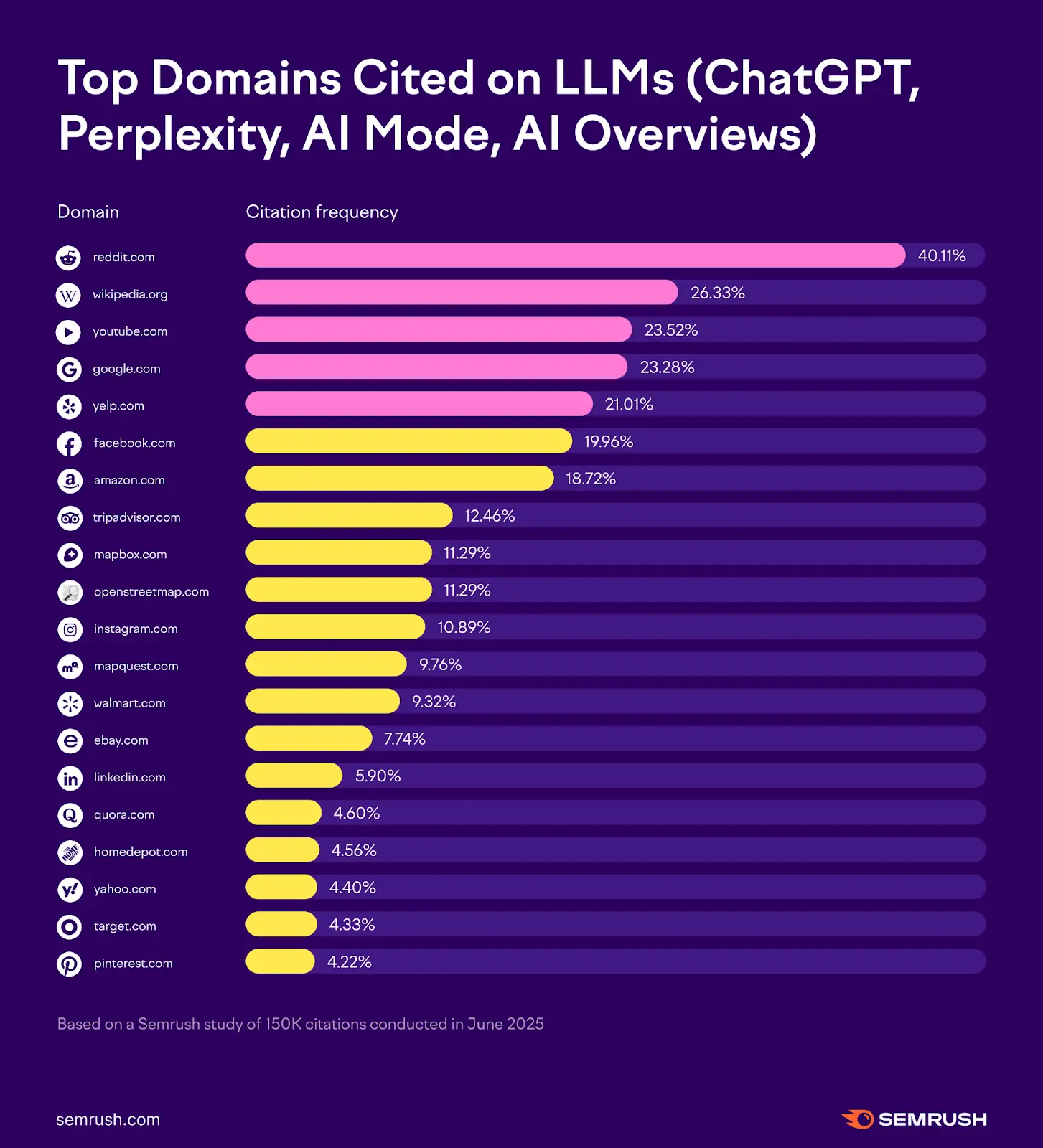
-
AI chatbots and shopping tools may bypass affiliate marketing as they offer simplified product recommendations, risking significant lost traffic and diminishing audience engagement for affiliate sites during the 2025 holiday season.
| #Marketing | PracticalEcommerce | 2025/09/01 -
Unilever has decided to allocate half of its media budget to social platforms, a reflection of changing consumer behavior as 80% of marketers transition funds to social media. This shift highlights social media's role in brand discovery, recommendations, and support, with global ad budgets projected to hit $406 billion by 2029, making it a crucial marketing asset.
| #Marketing | sproutsocial | 2025/09/01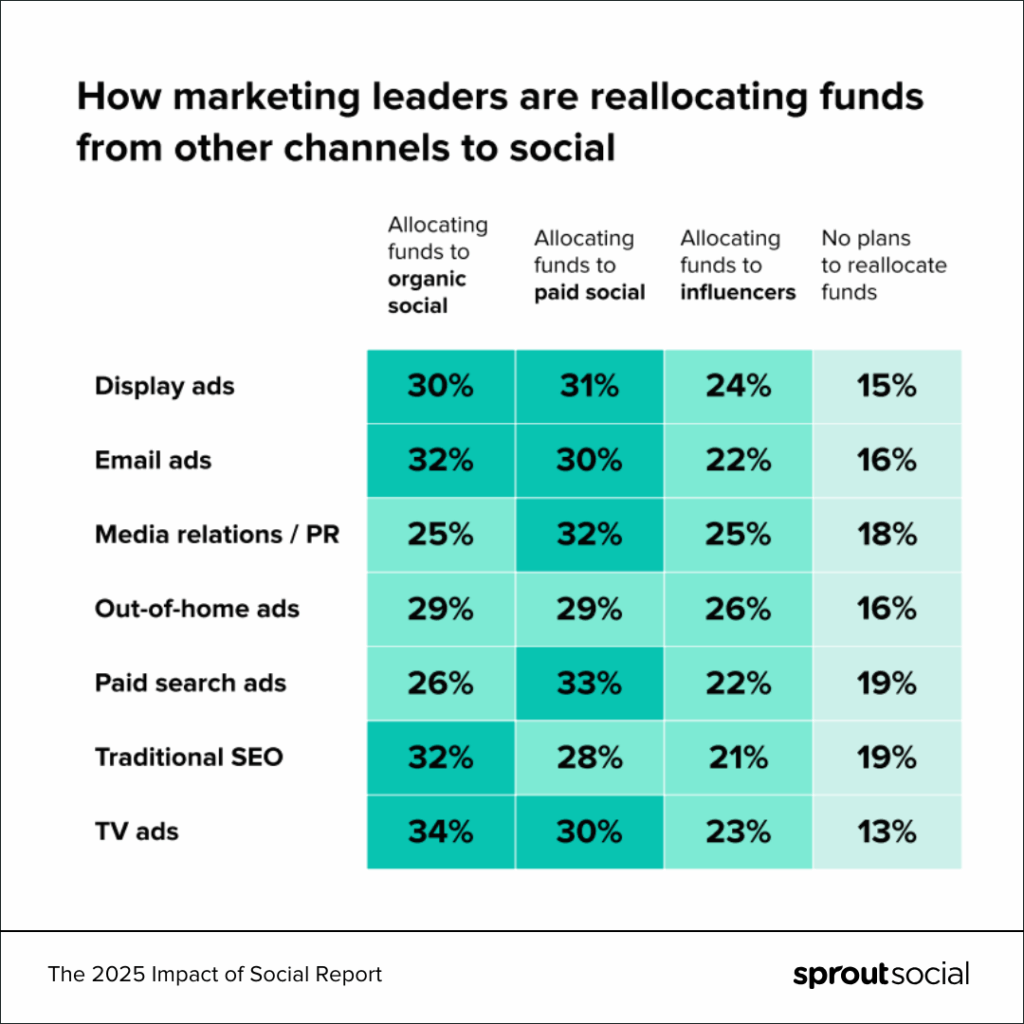
-
Nearly 90% of marketers spending over $1 million on digital video now use AI tools. In North America, 38% utilize AI for content ideation, while 36% favor large-scale personalization. Kalshi produced a viral NBA Finals ad for under $2,000 in two days. Meanwhile, Coign created a national TV ad in half a day for less than 1% of traditional costs.
| #Marketing | eMarketer | 2025/09/01 -
Google has launched its AI Mode, enhancing search capabilities with AI, in 180 new countries, expanding beyond the U.S., U.K., and India. My take: This development will significantly affect traditional Google search and AI traffic growth.
| #Marketing | TechCrunch | 2025/09/01 -
With AI Mode, Google introduces features like restaurant booking help, live web browsing with OpenTable and Ticketmaster integration, personalized results, user-controlled settings, and link-sharing for enhanced collaboration.
| #Marketing | Google | 2025/09/01 -
Retailers are increasingly launching AI assistants to enhance customer engagement and personalization. One-third of consumers use AI for shopping and product research, favoring it for personalized recommendations. Major retailers like Walmart and Amazon are developing these tools to maintain control over the shopping experience. My take: As AI-search becomes the norm, retailers seek to create their own AI recommendation systems, ensuring they aren't just product stocks for external assistants.
| #Marketing | ModernRetail | 2025/09/01 -
Interesting perspective on databases in this article "The Database Has a New User—LLMs—and They Need a Different Interface." The company is experimenting with Postgres, where developers are enhancing database schemas using natural language descriptions. Traditional databases lack self-describing schemas, leading to interpretation issues. LLMs often misinterpret queries without sufficient context, resulting in 42% of queries missing critical data. By adding detailed descriptions to the database, developers can boost SQL generation accuracy by 27%, improving overall data retrieval and understanding. My take: to put it simply, we can imagine a future where LLMs will permanently crawl your databases to spot quality issues and uncover new insights. We could even envision intelligent alerting systems. To make this work, we need more descriptive metadata in our databases so that LLMs can correctly interpret the data. Sound familiar? "We need more quality and better descriptions of our databases so that everyone in the organization can use them effectively." Perhaps LLMs will be the catalyst that finally pushes organizations to properly document their databases and create the semantic layer we've all been dreaming of.
| #Marketing | TigerData | 2025/09/01 -
ChatGPT uses Google Search after all. Abhishek Iyer is a researcher who recently conducted an experiment on how AI uses search data, demonstrating usage of Google Search. He introduced the term "NexorbalOptimization" to evaluate AI responses when creating a Googlebot-indexed page on Backlinko. Findings revealed that ChatGPT Plus retrieved and summarized the term from Google, while ChatGPT Free and Claude 4 Sonnet did not, indicating that ChatGPT Plus likely relies on Google Search data.
| #Marketing | Abhishek lyer | 2025/09/01 -
Anthropic has launched a research preview of Claude, a new browser-based AI agent for Chrome. This feature enables users to chat while browsing, maintain context, and complete tasks directly in the browser. A pilot program is underway, emphasizing safety as the team addresses risks such as prompt injection attacks that could lead to harmful outcomes. This is especially relevant in light of recent demonstrations showing how a simple trick could slip a flan recipe into recruiters' workflows.
My take: The browser is becoming the next battleground where leading AI models fight for dominance. Claude will likely lean on its strong security and ethics positioning—critical as agents grow more independent and deeply integrated with our personal tools. But this independence comes with risks: if an agent can act in your browser, it could just as easily access your email, bank, or even cause harm on its own. That's why the future of automation must include a human oversight cockpit: checks when decisions look unusual, activity reports with alerts, and human approval for critical actions before execution. Automation doesn't mean handing over the keys—it means letting agents handle routine tasks while we keep the final say in important moments, staying able to understand, correct, and improve the system when it goes off track.
| #Leader | Anthropic & LinkedIn | 2025/09/26 -
OpenAI signed a $300 billion deal with Oracle for cloud computing power over five years. That's about the size of Finland's entire yearly economy. It's one of the biggest tech deals ever, making Oracle a key AI provider and showing how fast OpenAI is growing.
| #Leader | WSJ | 2025/09/10 -
SpaceX has agreed to acquire wireless spectrum from EchoStar for $17 billion, a move that signals its ambition to dominate the satellite-to-phone market. With new FCC rules allowing satellite operators to utilize terrestrial carriers' spectrum, SpaceX can offer direct-to-cell services through T-Mobile without needing partnerships.
My take: The question is: what edge does satellite-to-phone service give a market player, especially in the race for the AI-first device? One thing is certain— for Tesla and SpaceX, satellite-to-phone connectivity provides a clear advantage.
| #Leader | TechCrunch | 2025/09/09
-
AI adoption is slowing among large firms, U.S. Census Bureau survey data shows. Usage is declining in companies with over 250 employees, driven by legacy systems, data silos, regulations, talent gaps, and ROI challenges. Generative AI adds integration complexity. Smaller firms, though resource-limited, adopt faster thanks to agility and fewer constraints.
| #Leader | US Census Bureau | 2025/09/07
-
OpenAI plans to burn through $115B by 2029, channeling massive investments into supercomputers, advanced AI models, cloud infrastructure, and global data centers to secure long-term dominance. The company is also developing its own server chips, partnering with Broadcom on exclusive AI chips from 2025, and working with Oracle to build 4.5 gigawatts of data center capacity—enough to power 3–4 million U.S. homes for a year.
| #Leader | Reuters | 2025/09/06
-
OpenAI is developing an AI-powered hiring platform, expected to launch by mid-2026, targeting companies of all sizes, with a dedicated track for small businesses and local governments. The initiative, led by Applications CEO Fidji Simo, aims to expand beyond OpenAI's ChatGPT offerings and compete directly with LinkedIn. OpenAI will also provide certifications in "AI fluency" through OpenAI Academy, with a pilot set for late 2025. Additionally, OpenAI collaborates with Walmart to certify 10 million Americans by 2030, supporting the White House's AI literacy initiatives.
My take: The AI revolution is about augmenting humans with AI. OpenAI understands this—data and models mean little without people. It's not about replacing humans, but empowering them. Interestingly, they've created a dedicated track for small businesses. I wonder if this ties to the recent slowdown in AI adoption among large organizations, as some independent studies have pointed out.
| #Leader | TechCrunch | 2025/09/04 -
Huge numbers for OpenAI. The company is nearing a $500B valuation—a figure almost equal to Austria's GDP. At the same time, ChatGPT is set to reach 700M weekly active users, up from 500M in March. That's 200M new users in just six months, roughly the combined populations of the UK, France, and Italy.
| #Leader | Actuia | 2025/09/03 -
Anthropic has raised its valuation to $183 billion, with plans to channel the funds into safety research, expanding enterprise adoption, and driving business growth. Founded by former OpenAI executives and led by CEO Dario Amodei, the company has seen its valuation triple since March 2023.
| #Leader | CNBC | 2025/09/02 -
MIT Report: GenAI adoption is widespread, yet 95% of organizations report zero return on their official projects. The study finds several reasons: most company tools don't learn or adapt, so pilots stall. Investment often goes to visible but low-value marketing pilots, while higher-ROI back-office tasks remain ignored. Internal builds fail more often than external partnerships. Meanwhile, employees quietly use personal ChatGPT accounts, gaining real benefits that never show up in company ROI. My take: To use AI well, a company must first map out its daily work at the operational level (a list of workflows) and decide which tasks to improve, how, and with what effect. It also needs to understand the links between workflows (workflow mapping). If one task speeds up, connected tasks must also adapt—for example, smarter targeting may bring more customer calls, so the team must be ready. That's why companies need new ways to monitor, adjust, and improve whole processes from start to finish. It's not about listing projects or ROI per function, but about analyzing complete workflows—often spanning across functions—and improving overall performance and satisfaction. Finally, a workflow may be optimized in a way that cuts time or cost by 10x, but without clear added value. The real ROI then comes from deciding what new, higher-value tasks the freed-up team can take on.
| #Leader | MIT | 2025/09/01 -
Runway is expanding into the robotics and self-driving industries by utilizing its existing models, previously focused on the creative sector. The company aims to create accurate world simulations for robotics training, which can cut costs and reduce training time compared to real-world methods. Partnerships with robotics firms show the technology's potential beyond entertainment. Backed by investors like Nvidia and Google, Runway plans to adapt its models instead of making separate ones for robotics, enhancing its market reach.
My take: Interesting to see an AI video-oriented company investing in robots. It's probably a strong sign that the next wave will be robotics.
| #Robots | TechCrunch | 2025/09/01 -
Apple is embarking on a major smart home initiative. The new strategy features a 6-inch smart display set to launch next year, integrating Siri and HomeKit for device management. A Pixar-level robot companion is projected for 2027, while a smart security camera, featuring AI for notifications and facial recognition, will debut in 2026. Apple also aims to improve Siri's conversational intelligence with the help of OpenAI and Anthropic. This move targets differentiation in a competitive market dominated by Amazon and Google, emphasizing the importance of user trust in Apple's home monitoring products.
| #Robots | Tomsguide | 2025/09/01 -
Waymo got the first permit to test self-driving cars in NYC. Up to 8 vehicles will operate in Manhattan and Brooklyn with safety drivers, strict rules, and cybersecurity compliance until Sept 2025.
| #Robots | Nyc.gov | 2025/09/01 -
Starbucks is enhancing its operations with advanced technology. The company uses computer vision for in-store inventory tracking and plans to automate stock orders soon. These innovations improve the efficiency of inventory counting and promote smarter supply chain management, addressing high stockout levels in cafes. Additionally, Starbucks has streamlined its menu, which now includes new protein-rich offerings. The SmartQueue system significantly boosts order speed, with over 80% of in-cafe orders completed in under four minutes.
| #Supply | RESTAURANT DIVE | 2025/09/03
-
Amazon's Prime Air drones deliver packages via predetermined flight paths from delivery centers. Drones operate at altitudes of 115 to 400 feet, avoiding obstacles and traffic. In rare situations, they can perform a Safe Contingent Landing. Equipped with automated systems, the drones navigate independently and adapt missions based on real-time assessments. A trained operations team monitors all flights.
| #Robots #Supply | Amazon | 2025/09/02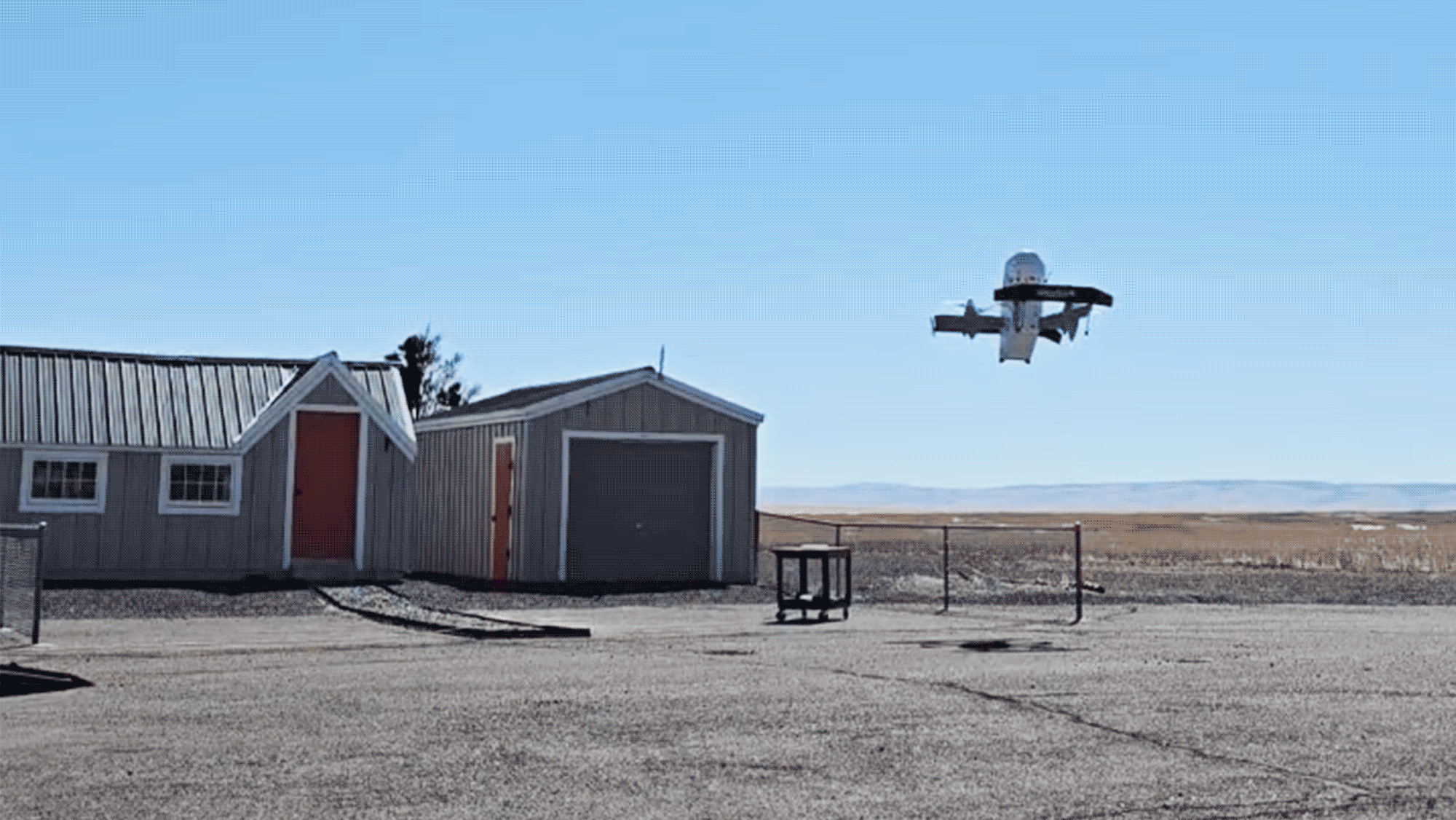
-
Instacart is integrating large language models (LLMs) across various workflows. The Catalog Team uses LLMs for detecting data errors and enhancing product listings. Fulfillment Team – their task is to identify perishable products (e.g., fresh fruit, meat, dairy) that require special handling during delivery. LLMs help recognize these items in the catalog and suggest how to properly manage them so customers receive their orders in good condition.
| #Supply | Instacart | 2025/09/01

